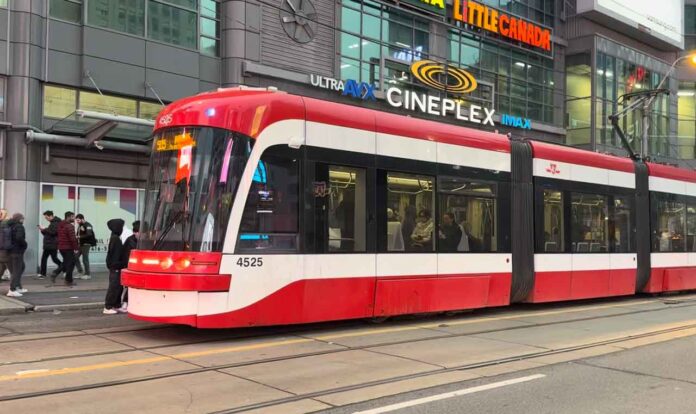Infra
Toronto’s low-income and racialized neighbourhoods tend to have fewer trees. Here’s why
Janet McKay, the executive director of nonprofit Local Enhancement and Appreciation of Forests (LEAF), has partnered with the City of Toronto to understand and improve tree equity in the city’s neighbourhoods.Galit Rodan/The Globe and Mail
Toronto neighbourhoods with lower incomes and more racialized residents have fewer trees, according to a new online tool.
The City of Toronto, Local Enhancement and Appreciation of Forests (LEAF) and American Forests developed the tree equity score analyzer (TESA), which measures tree canopy along with demographic and socioeconomic data.
The tool, which launched earlier this year, shows that Toronto residents have uneven access to the myriad benefits of trees, said Janet McKay, executive director of LEAF, a non-profit organization.
Ms. McKay spoke with The Globe and Mail about tree equity.
What is tree equity?
Trees are critical urban infrastructure and really essential to public health and well-being. Tree equity refers to the fair distribution of trees in all neighbourhoods, regardless of race or income, so everyone has access to the benefits of a healthy urban forest and that includes environmental benefits, health benefits and economic benefits.
How is tree equity measured?
Open-source data is taken from a variety of sources and then it’s combined into a map that shows neighbourhood scores from zero to 100. So, the lower the score, the greater the need for investment. And the data includes tree canopy and building data density, for example, also surface temperature, some health data and then socio-economic data, like income, unemployment, race, language and age.
How do Toronto neighbourhoods rank in terms of their tree equity scores?
In Toronto, we can see that neighbourhoods located near industrial areas, for example, have lower tree equity scores. Also, neighbourhoods with lower canopy cover tend to have lower household incomes and higher Black, Indigenous and People of Colour populations. And then the inverse is also true. In white and white-dominant neighbourhoods, we see more trees. But this TESA tool now will allow us to get much more detailed in how we see the inequities, right down to a neighbourhood and a street-by-street, lot-by-lot kind of level. It’s quite amazing.
What factors explain the sparser tree canopy in neighbourhoods with higher poverty and more racialized residents?
There are lots of things at play here. There are discriminatory practices, like redlining, that happened historically but are still happening today. Redlining is the practice of denying people access to credit because of where they live. Those neighbourhoods had fewer services and less investment in them in general. And so that sets the stage for some of these inequities that really shaped the physical and the socio-economic realities of those neighbourhoods.
Also, things like urban planning and development practices that prioritize grey infrastructure over living green infrastructure. We see that very much in how our cities were developed – trees were sort of treated as an afterthought as opposed to a very important initial consideration in terms of planning and development. Residents with lower incomes tend to own lots that are smaller, and have less available space for planting. And conversely, wealthier neighbourhoods have larger properties and just more space, more trees. Housing type is another issue. For example, folks who rent their homes have to go through a lot of hoops and layers of approval just to get trees planted.
Why does tree equity matter?
Everyone deserves access to the benefits that trees provide – environmental, health benefits and economic benefits. And with climate change on us now, the physical and mental health benefits offered by trees are just more important than ever. For example, the shade and cooling benefits of trees in cities are crucial, especially for the most vulnerable people in the city. So, we really have to work to ensure that all residents get that fair and equitable access to the benefits that our trees and our urban forest can provide.
What steps should the city and other organizations take to increase tree equity in Toronto?
I think that municipalities and community groups like LEAF have a responsibility to understand how to best engage with diverse communities and how to remove barriers that are standing in the way of tree equity. The first thing we need to do is listen, learn and recognize, so that means we have to do our homework. We have to understand that colonialism, systemic racism, white privilege and all of those things that underlie this inequity.
How will this tool be useful in the real world?
I think to be determined. My hope is that it will be used by the decision-makers, for example, the municipality, to take a more strategic approach to their program offerings and how they do things. It certainly can inform where needs exist. It’s going to be one tool in a long and complex process. But hopefully, it can help even just raise awareness. I think the fact that you can now look and see the inequitable scores across the city is in itself very useful.
How does Toronto compare to other large Canadian cities in terms of tree equity?
Most large cities, Canadian and United States are in a state of tree inequity. We don’t have a lot of specific, detailed research on this yet. But it’s safe to say that Toronto’s similar to other large cities where there’s that relationship between higher income and higher canopy cover.
This interview has been condensed and edited.










